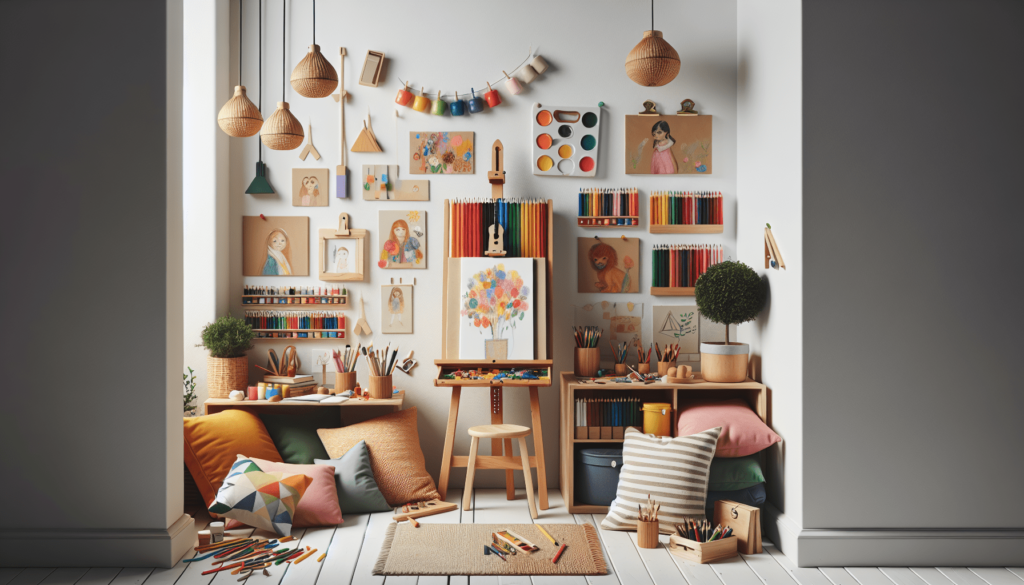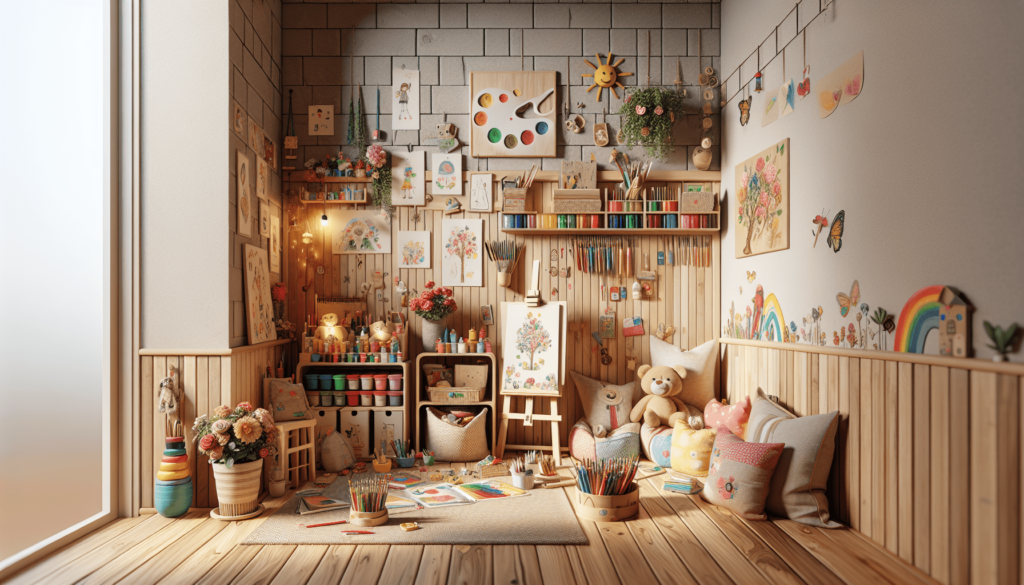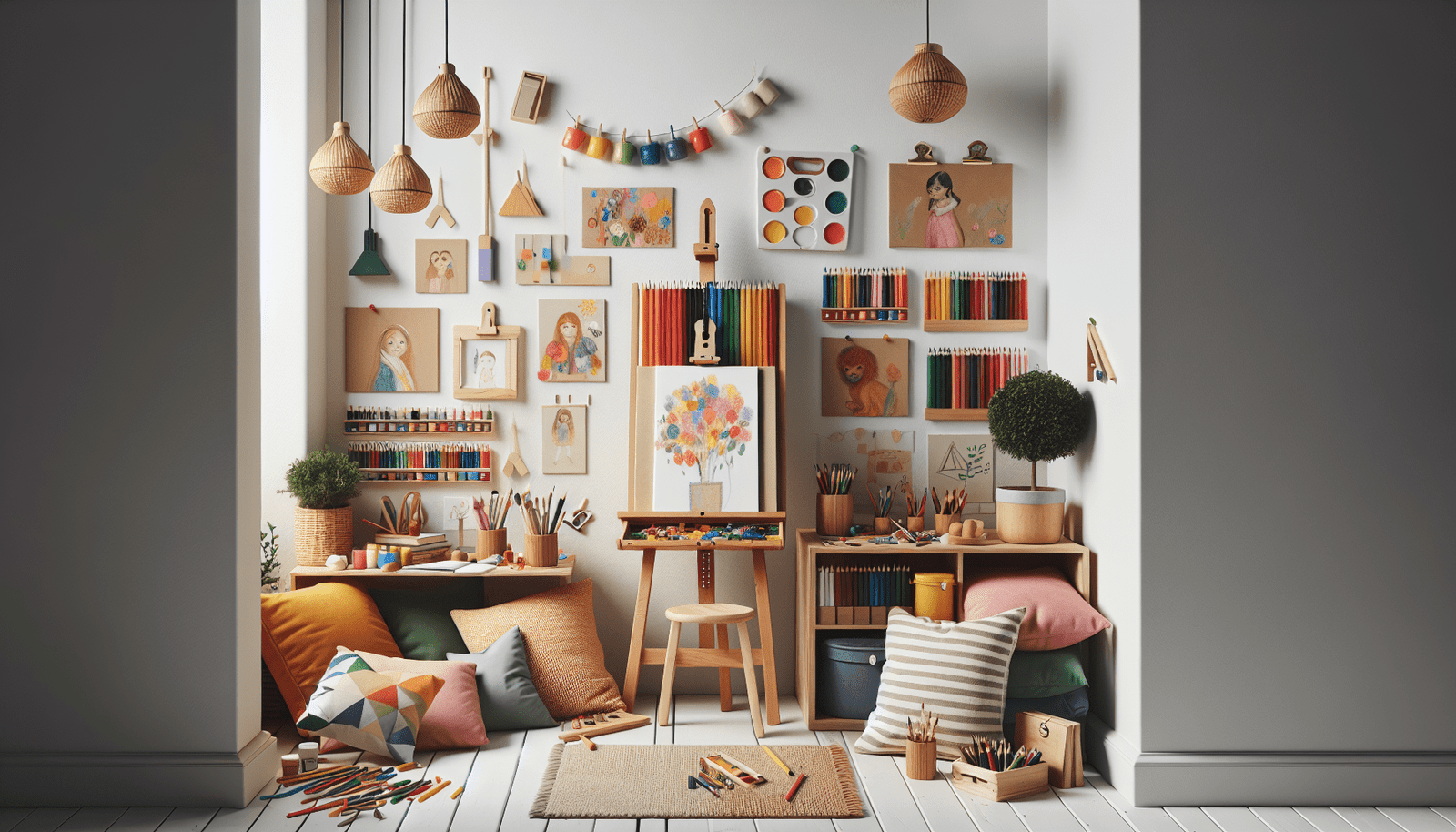Setting Up a Functional Art Space for Kids
Are you looking to create a creative and engaging environment for your children at home? Setting up a functional art space for kids can be a great way to promote their artistic skills and provide them with a dedicated area to explore their creativity. In this article, we will discuss practical tips and ideas on how you can set up an art space that is functional, organized, and inspiring for your little ones.

Choosing the Right Location
When setting up an art space for kids, it’s essential to choose the right location in your home. Select a well-lit area that has good ventilation and is away from high-traffic zones to minimize distractions. Ideally, you would want to set up the art space in a quiet corner of a room, where your children can focus on their artwork without interruptions.
Why is the location important?
Picking the right spot for your kids’ art space can make a significant difference in how they engage with their creative projects. By providing a quiet and well-lit area, you can create a conducive environment that encourages their artistic expression and concentration.
Organizing Art Supplies
One of the key elements of a functional art space for kids is having well-organized art supplies readily available. Invest in storage solutions like clear bins, drawers, and shelves to keep art materials like crayons, markers, paint, paper, brushes, and other supplies neatly arranged and easily accessible. Labeling containers can also help children identify and return items to their proper place, promoting responsibility and tidiness.
Why is organizing supplies important?
By keeping art supplies organized and within reach, you can facilitate your children’s creativity and independence. Having a designated place for each item not only makes it easier for them to find what they need but also encourages them to clean up after themselves and maintain a clutter-free art space.
Creating a Creative Display Area
Incorporating a creative display area in your kids’ art space can showcase their masterpieces and boost their confidence. Install a gallery wall using clipboards, strings, or magnetic boards to exhibit their artwork proudly. Rotating the displayed pieces periodically can keep the space fresh and encourage them to continue creating new art. Additionally, adding a chalkboard or whiteboard can provide a space for spontaneous doodling or jotting down ideas.
Why is a creative display area beneficial?
Displaying children’s artwork can validate their efforts and creativity, fostering a sense of pride and accomplishment. By creating a designated space to exhibit their work, you are encouraging them to express themselves freely and showcasing their artistic growth over time.
Incorporating Ergonomic Furniture
To ensure that your kids’ art space is comfortable and functional, consider investing in ergonomic furniture. Choose child-sized tables and chairs that are adjustable and provide proper support for their posture. Additionally, include storage options like caddies, carts, or bins to keep art supplies organized and within reach. Creating a comfortable and clutter-free workspace can enhance your children’s creativity and productivity.
Why is ergonomic furniture important?
Ergonomic furniture promotes good posture and comfort, reducing the risk of strain or discomfort during prolonged art sessions. By providing your children with furniture that is tailored to their size and needs, you are prioritizing their physical well-being and creating an enjoyable art space where they can unleash their creativity without any discomfort.

Setting Up a Cleaning Station
Incorporating a cleaning station in your kids’ art space can encourage them to embrace the creative process without worrying about the mess. Include essentials like paper towels, wet wipes, aprons, and a designated area for water and brush cleaning. Teaching your children the importance of cleaning up after themselves can instill good habits and respect for their workspace.
Why is a cleaning station essential?
A cleaning station allows children to engage in art activities without the fear of creating a mess. By providing easy access to cleaning supplies, you can teach them the importance of tidiness and responsibility in maintaining their art space. Encouraging regular clean-up practices can also help them develop valuable organizational skills.
Incorporating Inspirational Decor
Enhance your kids’ art space with inspirational decor that sparks their creativity and imagination. Consider adding colorful wall decals, motivational posters, or art prints that reflect their interests and passions. Incorporating elements like plants, soft lighting, or cozy rugs can create a welcoming and stimulating environment that inspires their artistic endeavors.
Why is inspirational decor important?
Inspiring decor can set the tone for a creative and imaginative art space that motivates your children to explore and experiment with their artistic skills. By surrounding them with visual elements that resonate with their personality and interests, you can create an inspiring atmosphere that encourages self-expression and originality.

Establishing Art Rules and Guidelines
Setting clear art rules and guidelines can help establish boundaries and expectations for your kids’ art space. Encourage them to respect the art materials, clean up after themselves, and share the space with siblings or friends. Establishing rules like using smocks to prevent stains, putting lids back on paint jars, and handling brushes with care can promote a safe and conducive environment for artistic exploration.
Why are art rules important?
Art rules provide structure and guidance in your kids’ art space, ensuring that they understand how to use and maintain the space responsibly. By setting clear expectations and boundaries, you can teach them essential skills like organization, respect for materials, and cooperation with others. Enforcing art rules can create a harmonious and productive art space that promotes creativity and learning.
Implementing a Rotating Art Station
To keep your kids’ art space dynamic and engaging, consider implementing a rotating art station with different creative activities and materials. Create themed art bins with supplies for painting, drawing, sculpting, collage, or DIY projects that they can explore based on their interests. Rotating the art stations periodically can keep the space exciting and promote continuous creativity and learning.
Why is a rotating art station beneficial?
A rotating art station introduces variety and novelty into your kids’ art space, encouraging them to experiment with different art mediums and techniques. By providing them with diverse creative options, you can stimulate their curiosity and expand their artistic skills. Rotating the art stations can also prevent boredom and inspire them to explore new forms of expression.

Encouraging Open-Ended Art Projects
Promote open-ended art projects in your kids’ art space to stimulate their creativity and imagination. Encourage them to engage in activities like free drawing, mixed media art, collaborative projects, and process-based art that focus on the creative process rather than the end result. Provide them with ample time and space to explore, experiment, and express themselves freely without any limitations or constraints.
Why are open-ended art projects valuable?
Open-ended art projects foster creativity, critical thinking, and problem-solving skills in children by allowing them to explore and experiment with different artistic avenues. By encouraging them to focus on the process rather than the final product, you are promoting self-discovery, innovation, and self-expression. Engaging in open-ended art projects can also boost their confidence, resilience, and sense of accomplishment.
Establishing a Routine for Art Time
Creating a routine for art time in your kids’ art space can help them develop a consistent creative practice and make art a regular part of their daily lives. Set aside dedicated time each day for them to engage in art activities, explore new techniques, and work on personal projects. Establishing a routine can cultivate a sense of discipline, focus, and creativity in your children while providing them with a structured and enriching artistic experience.
Why is establishing a routine important?
A routine for art time instills discipline, focus, and commitment in your children, helping them develop a consistent creative practice and make the most of their art space. By setting aside dedicated time for artistic exploration, you are fostering a sense of responsibility, perseverance, and dedication to their creative pursuits. Establishing a routine can also create a sense of anticipation and excitement for art time, making it a cherished part of their daily routine.

Encouraging Artistic Exploration and Experimentation
Encourage your children to explore and experiment with different art mediums, techniques, and styles in their art space. Provide them with a variety of materials, tools, and resources to ignite their curiosity and spark their creativity. Allow them to try new things, make mistakes, and learn from the process without any fear of judgment or failure.
Why is artistic exploration important?
Artistic exploration allows children to discover, innovate, and express themselves through various creative avenues, fostering self-confidence, resilience, and adaptability. By encouraging them to experiment with different art mediums and techniques, you are nurturing their artistic skills, critical thinking, and problem-solving abilities. Artistic exploration also promotes a sense of curiosity, discovery, and self-expression, allowing children to unleash their creativity and unlock their potential.
Promoting Collaboration and Sharing
Encourage your kids to collaborate and share their art space with siblings, friends, or family members. Promote activities like group projects, art swaps, or collaborative artworks that foster teamwork, communication, and cooperation. By creating a supportive and inclusive environment, you can teach your children the value of collaboration, empathy, and sharing while promoting creativity and social skills.
Why is collaboration important?
Collaboration promotes teamwork, communication, and cooperation among children, fostering relationships, social skills, and empathy. By encouraging your kids to work together and share their art space with others, you are cultivating a sense of unity, respect, and mutual support. Collaboration inspires creativity, innovation, and collective learning, allowing children to connect, communicate, and create together in a harmonious and inclusive environment.
Conclusion
Setting up a functional art space for kids is an enriching and rewarding process that can nurture their creativity, imagination, and self-expression. By choosing the right location, organizing art supplies, creating a creative display area, incorporating ergonomic furniture, and establishing art rules, you can create a conducive and inspiring environment for your children to explore and develop their artistic skills. Encouraging open-ended art projects, implementing a rotating art station, establishing a routine for art time, and promoting collaboration and sharing can further enhance their creative experience and foster a love for art that lasts a lifetime. Remember to personalize the art space based on your children’s interests, preferences, and needs to create a space that inspires and empowers them to unleash their creativity and make art a cherished part of their daily lives.
Setting up a functional art space for your kids can be a delightful and fulfilling experience that brings joy, inspiration, and creativity into your home. Embrace the process, enjoy the journey, and celebrate the masterpieces that your little artists create in their very own art space!

